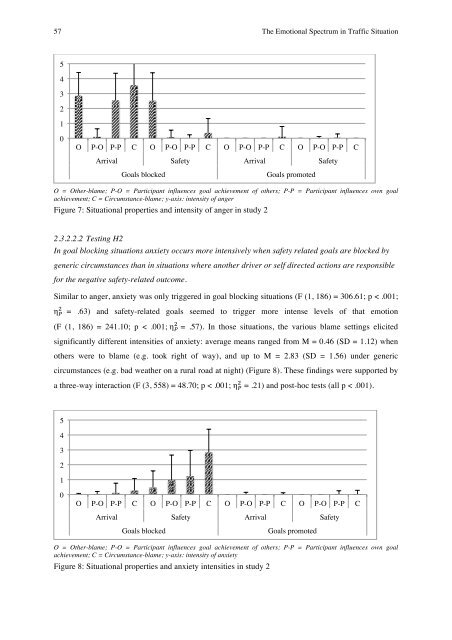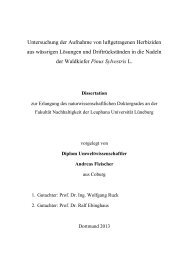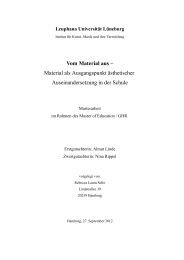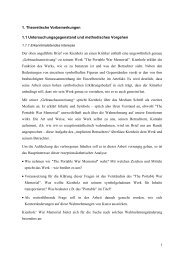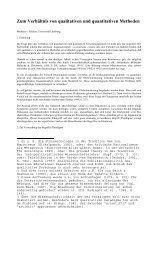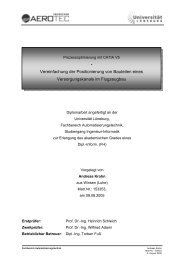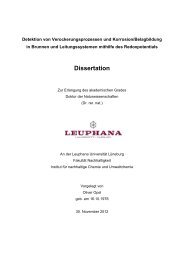Determinants of Emotional Experiences in Traffic Situations ... - OPUS
Determinants of Emotional Experiences in Traffic Situations ... - OPUS
Determinants of Emotional Experiences in Traffic Situations ... - OPUS
Create successful ePaper yourself
Turn your PDF publications into a flip-book with our unique Google optimized e-Paper software.
57 The <strong>Emotional</strong> Spectrum <strong>in</strong> <strong>Traffic</strong> Situation<br />
5"<br />
4"<br />
3"<br />
2"<br />
1"<br />
0"<br />
O" P-O" P-P" C" O" P-O" P-P" C" O" P-O" P-P" C" O" P-O" P-P" C"<br />
Arrival" Safety" Arrival" Safety"<br />
Goals blocked"<br />
Goals promoted"<br />
O = Other-blame; P-O = Participant <strong>in</strong>fluences goal achievement <strong>of</strong> others; P-P = Participant <strong>in</strong>fluences own goal<br />
achievement; C = Circumstance-blame; y-axis: <strong>in</strong>tensity <strong>of</strong> anger<br />
Figure 7: Situational properties and <strong>in</strong>tensity <strong>of</strong> anger <strong>in</strong> study 2<br />
2.3.2.2.2 Test<strong>in</strong>g H2<br />
In goal block<strong>in</strong>g situations anxiety occurs more <strong>in</strong>tensively when safety related goals are blocked by<br />
generic circumstances than <strong>in</strong> situations where another driver or self directed actions are responsible<br />
for the negative safety-related outcome.<br />
Similar to anger, anxiety was only triggered <strong>in</strong> goal block<strong>in</strong>g situations (F (1, 186) = 306.61; p < .001;<br />
!<br />
η ! = .63) and safety-related goals seemed to trigger more <strong>in</strong>tense levels <strong>of</strong> that emotion<br />
!<br />
(F (1, 186) = 241.10; p < .001; η ! = .57). In those situations, the various blame sett<strong>in</strong>gs elicited<br />
significantly different <strong>in</strong>tensities <strong>of</strong> anxiety: average means ranged from M = 0.46 (SD = 1.12) when<br />
others were to blame (e.g. took right <strong>of</strong> way), and up to M = 2.83 (SD = 1.56) under generic<br />
circumstances (e.g. bad weather on a rural road at night) (Figure 8). These f<strong>in</strong>d<strong>in</strong>gs were supported by<br />
a three-way <strong>in</strong>teraction (F (3, 558) = 48.70; p < .001; η ! ! = .21) and post-hoc tests (all p < .001).<br />
5"<br />
4"<br />
3"<br />
2"<br />
1"<br />
0"<br />
O" P-O" P-P" C" O" P-O" P-P" C" O" P-O" P-P" C" O" P-O" P-P" C"<br />
Arrival" Safety" Arrival" Safety"<br />
Goals blocked"<br />
Goals promoted"<br />
O = Other-blame; P-O = Participant <strong>in</strong>fluences goal achievement <strong>of</strong> others; P-P = Participant <strong>in</strong>fluences own goal<br />
achievement; C = Circumstance-blame; y-axis: <strong>in</strong>tensity <strong>of</strong> anxiety<br />
Figure 8: Situational properties and anxiety <strong>in</strong>tensities <strong>in</strong> study 2<br />
!


